Gravel Worlds: Comparing Jay Thomas’ Championship in 2012 to 2022
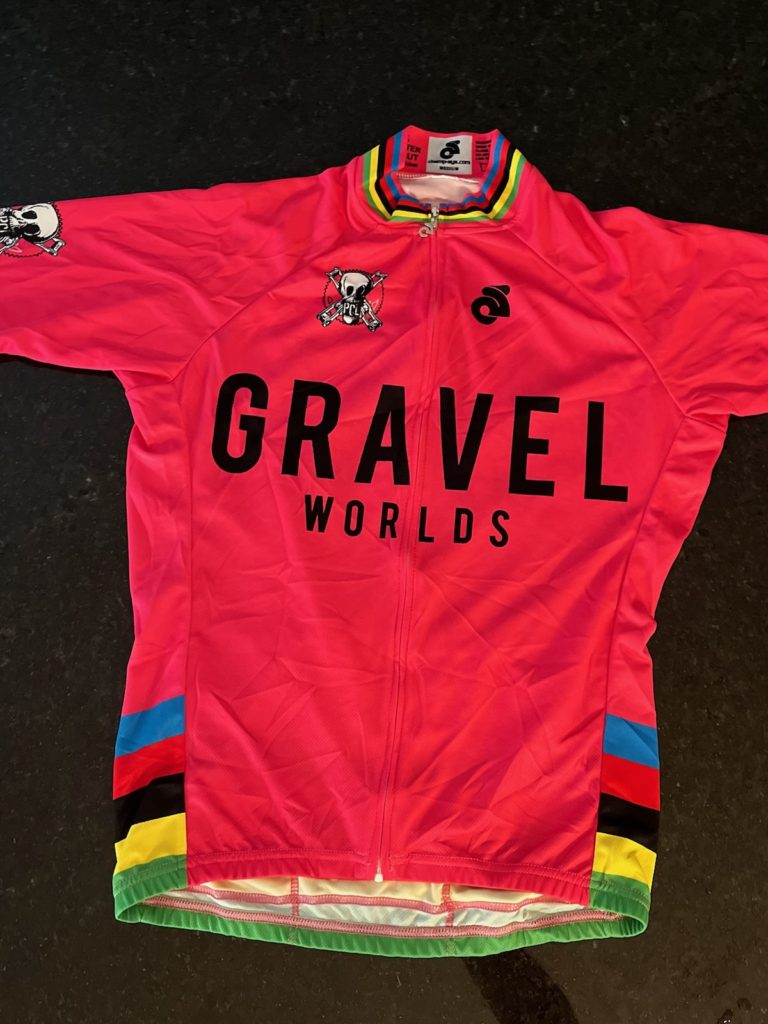
10 years in sports is an eternity. Rarely is any athlete able to repeat or beat a peak performance from yester-year. We compare Jay Thomas' performances at Gravel Worlds from 2012 to 2022.
“Age is no barrier. It’s a limitation you put on your mind.” ~Jackie Joyner-Kersee
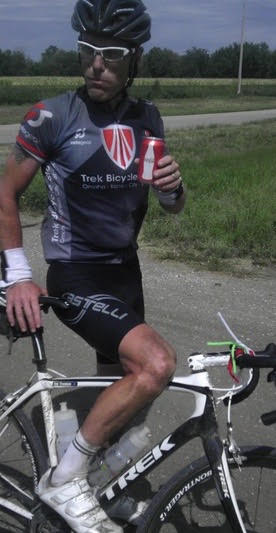 The year is 2012 and Jay Thomas is a young 43 years of age and newly minted Gravel Worlds Champion. Even though he is officially an “aging athlete” Jay was very much holding his peak form from his mid-30’s. Jay came home with a victory, brand new rainbow-ish striped jersey, a sabre* and the swagger of a Gravel Worlds Champion. The winning time was 9 hours and 6 minutes.
The year is 2012 and Jay Thomas is a young 43 years of age and newly minted Gravel Worlds Champion. Even though he is officially an “aging athlete” Jay was very much holding his peak form from his mid-30’s. Jay came home with a victory, brand new rainbow-ish striped jersey, a sabre* and the swagger of a Gravel Worlds Champion. The winning time was 9 hours and 6 minutes.
* Correction: Gravel Worlds did not award a sabre in 2012.
Fast forward 10 years and gravel has experienced more than a renaissance. It has also undergone an evolution away from home-grown adventure towards world class performance as it has moved into the space once occupied by Pro/Am road racing. Certainly a 53-year-old Jay Thomas should be hard pressed to perform at a level resembling his younger self. Right? From my experience coaching athletes of all abilities and backgrounds I can tell you that age is all too often just a number. Jay finished the 153 miles of the 2022 Gravel Worlds in 64th place, needing only 8 hours and 24 minutes, 42 minutes faster than his previous self.
In the 10 years between Jay’s attempts the world of endurance sports has undergone a number of incremental changes that have profoundly changed the sport. Undoubtedly the bikes are different. In 2012 Jay raced a first-generation Trek Domane with 200x 28c tires (with tubes-gasp) and mechanical shifting that weighed 17.5lbs. In 2022 he was on an unreleased Factor gravel bike with 700x44c tubeless tires and wireless shifting that weighed 18.5 lbs. Both bikes are identically at the forefront of technology, albeit of different generations. In Jay’s own words, “The ability to run wider tires makes the bike more comfortable and handles better with more tire contact on the gravel roads.” Also, the roughly 2.5x volume of a 44c vs 28c means the odds of pinch flatting is dramatically less. Heavier tires with air will always roll faster than a light tire that is flat.
Regarding physical performance, we are blessed by the luxury of having reliable and valid performance telemetry (power file) from each effort so we’re able to make a more direct comparison regarding performance. Special thanks to Quarq power meters on this front.
Jay spent the majority of 2012 focusing heavily on criterium and cyclocross racing. Because of this focus his primary training was on explosive efforts and rarely did his race-type efforts extend beyond a 100km (62 miles) road race. Applying that to 2022 iLevel terminology would equate to lots of FTP/ FRC and Pmax/FRC type efforts. These sorts of sharp leg biting efforts are superb for Jay’s focus at the time and certainly they helped him establish separation which he was able to leverage towards his 2012 wins.
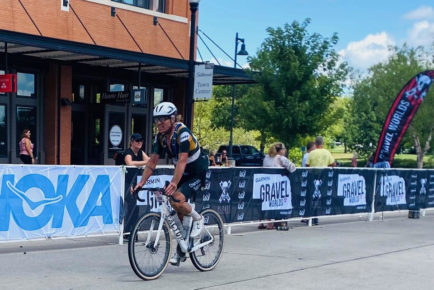
Jay left the sport shortly after 2012 as life events moved him away from the competitive cycling space. When he returned there was a newfound focus and eagerness about him. “After coming back from not riding from 2013 to end of 2019 my training started back up in earnest in 2020. The focus has been based around 3-4 endurance events a year. Similar volume
to 2012 with far fewer race days with longer rides on the weekends and more focus around power, fatigue, and durability. It seems that my rest days are way more important and that I no
t mess around and make sure to rest. Another big issue is that since 2017 I have been in recovery from alcohol abuse so I no longer drink any alcohol which overall helps with recovery.“
In sports 10 years is a lifetime. Many sports are nearly unrecognizable in style of play and cycling is no different. When preparing for 2022 we acknowledged that the game was different and that the training focus needed to match the landscape of the competition. We used many of the same concepts applied HERE to bolster Jay’s high power outputs after significant workloads. In 2012 analyzing this metric wasn’t possible and now we can directly measure the effectiveness of his training as it applies to his targeted events. Without a doubt, training process are more refined, more researched, more professional and largely more effective than what Jay was executing in 2012.
Fatigue Resistance: 2012 vs 2022
I’m using the last 3 years of performance for Jay as that’s when he made a comeback into cycling and where we began the process of preparing him for a (second) breakout year of racing.
10-minute effort
2012 Jay’s absolute, one-time best effort is roughly 12% better than 2022 Jay. However, once the race goes beyond 2500kJ 2022 Jay flips the script by going 12% better for a good portion of the day after fatigue sets in. It’s safe to say that after the halfway point of a big day 2022 Jay would simply ride 2012 Jay off the wheel given the opportunity.
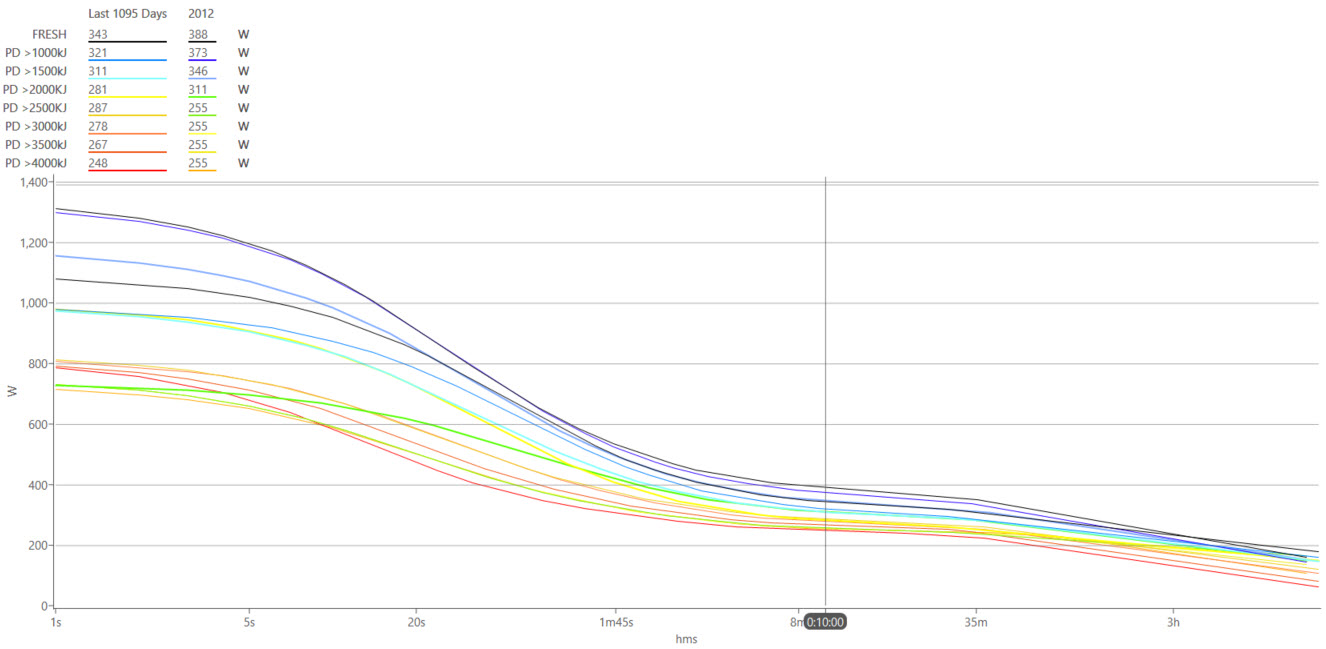
5-minute effort
Same type of story here too. Once the race hits +2500kJ Jay from 2022 is more physically equipped to handle the rigors of the remaining 65% of Gravel Worlds. In numerous other sports where “the 2nd half is the most important.” In cycling, it’s more so. An athlete that falls to pieces in the last few miles can lose minutes easily. They can also lose dozens of places with no hope of regaining them.
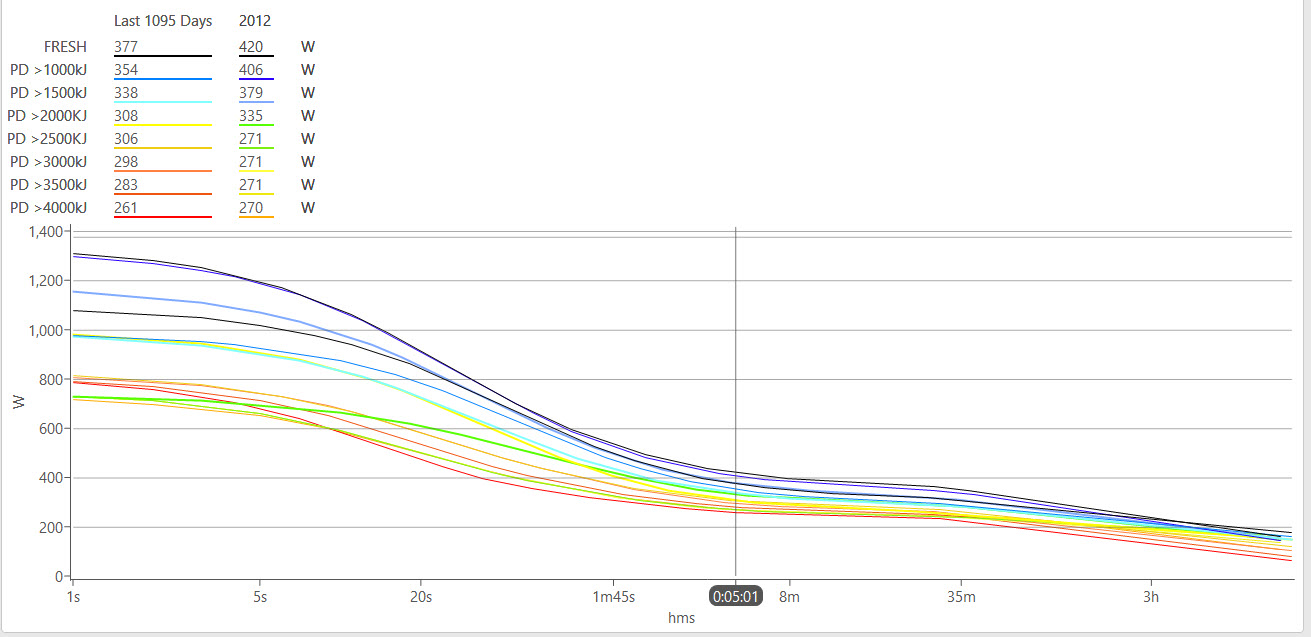
1- minute effort
More of the same story. However, this performance metric is immensely important as it’s a direct representation of your ability to create space behind you at will. If Jay were to show a 430W effort for 60 seconds early in the day it would only serve as a springboard for the peloton to capitalize on. However, if he shows that same card after 4 hours and 3000kJ the impact on the remaining peloton could be devastating.
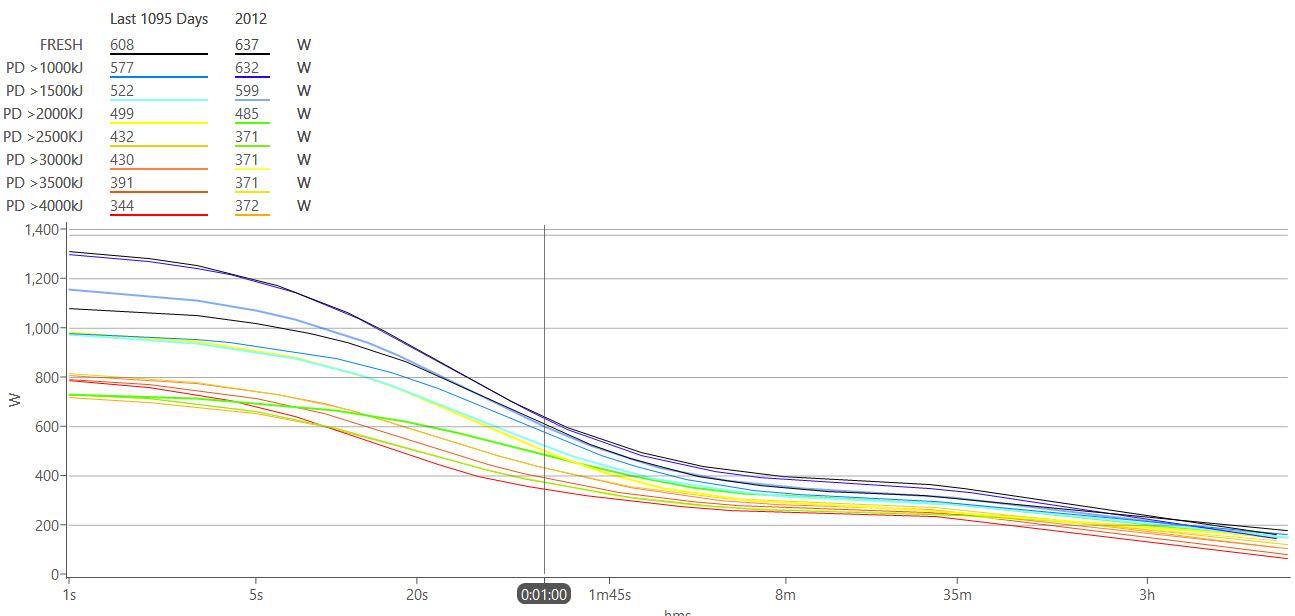
2012 v 2022: Direct Comparison
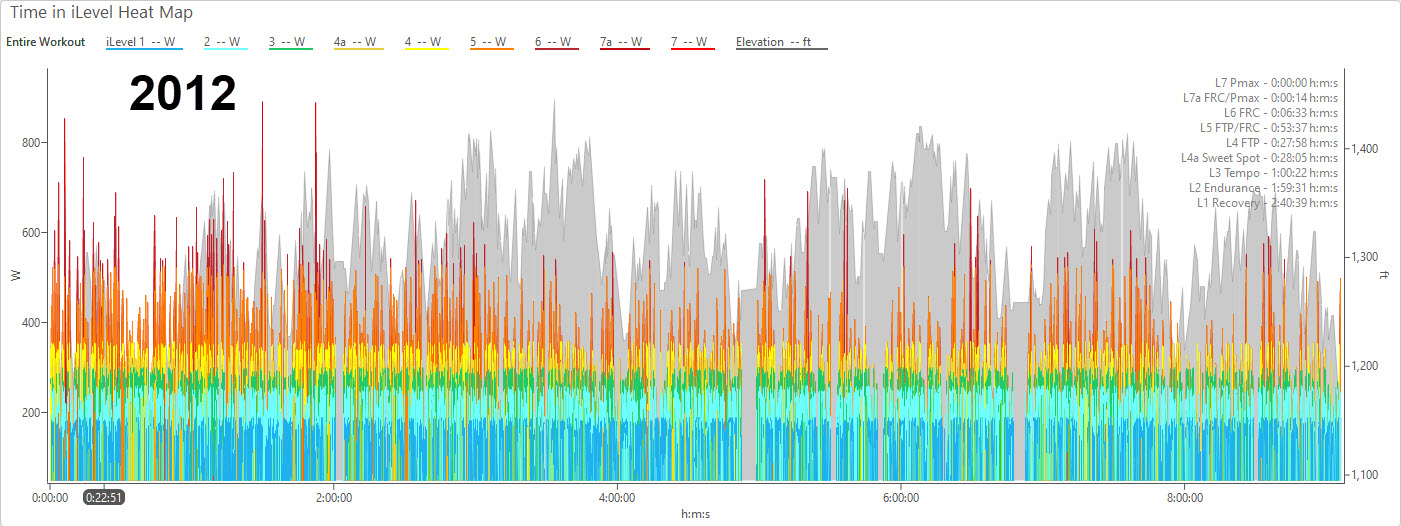
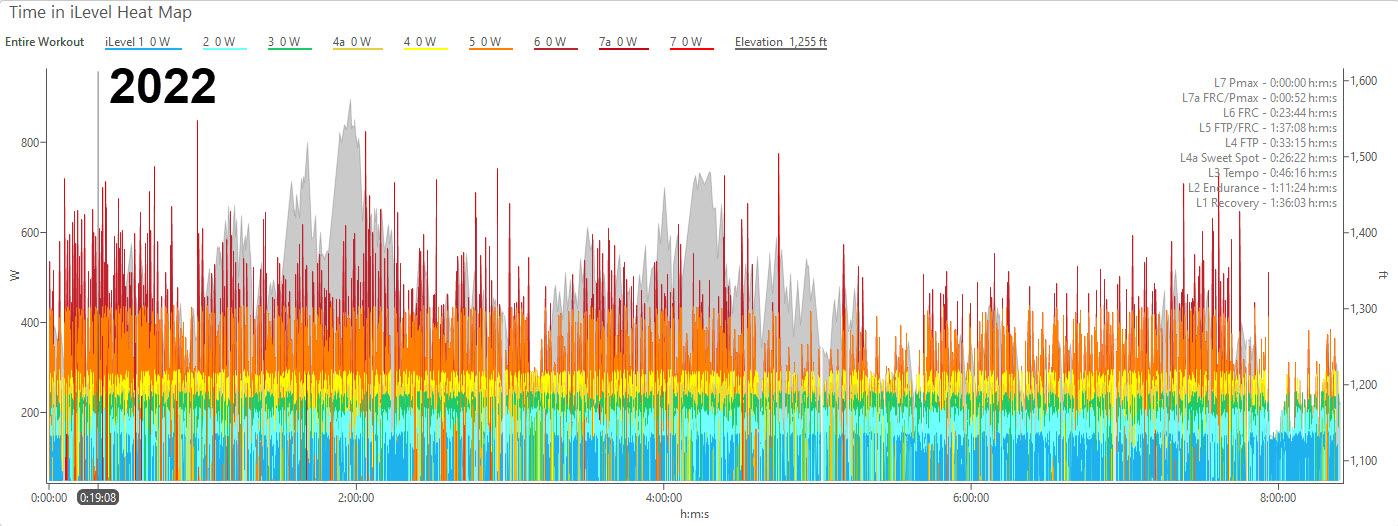
The first thing I notice is that both in 2012 and 2022 the races start hot and nasty. Lots of explosive efforts as every opportunity is taken to establish a front group of like-minded riders. This has been the norm for gravel racing as there has not yet been a successful application of imperialistic style team strategy to a gravel race. That evolution is coming and it may well be here by the end of 2022. But as of this race the general idea goes like this: 1) create an advantage. 2) press advantage 3) repeat until the peloton shatters. Once step 3 happens generally every group goes faster than the group behind them (generally). It’s beautiful chaos that favors lots of throttle, lots of fitness and good decision-making skills.
Take a closer look at the colors though and appreciate that the y-axis has been standardized so a high-power spike in each year is the same power. Jay goes to that high power well far, FAR, more in 2022 than was ever required in 2012. This is true in part because the modern level competition is much higher than in 2012. It’s true that his modeled Functional Threshold Power (FTP) was lower in 2022 than 2012, but this doesn’t explain the absolute time at an absolute power. Any way you cut it, the early part of the 2022 race saw Jay outperforming his 2012 self. I wonder what 2012 Jay would say to that?
Owing to 2022 Jay’s depth of fitness he was able to stay on the gas for nearly 5 hours. That’s a far cry from the 3.5 hours that 2012 Jay needed to stay engaged before the race effectively was placed on “autopilot.” Burning those early matches comes at a cost and any exceptional performance comes the risk of over-pacing. We’ve all done it and fortunately we’re able to see it very easily the final bit of 2022 Jay’s race file. That was a very dark and uncomfortable few minutes. Luckily, the repercussions from this fantastic implosion were minimized by the day’s hard work up until that point.
Overall, I like to look at the FTP/ FRC and the FRC iLevels as good indicators of how much the athlete rode “hard.” These efforts tend to be high intensity with low capacity same-day recovery. 2012 Jay spent right at 60 minutes of time in these iLevels and that was enough to win Gravel Worlds. Ten years later 2022 Jay would perform twice that volume of FTP/ FRC and FRC outputs and earn his 64th place overall.
In sports, Father Time is undefeated. Studies know that performance will peak, then begin a steady decline with age. We don’t know exactly when that will happen for any individual athlete and our plans for Jay’s off-season could very well result in another training article coming out in the spring. But right here and right now 2022 Jay is directly benefiting from professional coaching that is data driven and based on modern exercise physiology.
Thanks for reading.
 About the Author: Adam Mills has raced at the elite level since 2002 and graduated with a Masters Degree in Exercise Physiology from the University of Kansas in 2005. His true talent comes with his ability to combine his vast experience with his knowledge of sport. He is indeed a student of science, sport, athletic performance, strategy, and tactics. He continuously educates himself by keeping up to date with current research trends and methods in sport and his clients have reaped the benefits from this work with over 24 national championships in 11 disciplines on two continents. Adam is able to incorporate these attributes on a daily basis to help his clients reach and exceed their goals whether they are a beginner or a seasoned professional. Learn more about Adam and Source Endurance here.
About the Author: Adam Mills has raced at the elite level since 2002 and graduated with a Masters Degree in Exercise Physiology from the University of Kansas in 2005. His true talent comes with his ability to combine his vast experience with his knowledge of sport. He is indeed a student of science, sport, athletic performance, strategy, and tactics. He continuously educates himself by keeping up to date with current research trends and methods in sport and his clients have reaped the benefits from this work with over 24 national championships in 11 disciplines on two continents. Adam is able to incorporate these attributes on a daily basis to help his clients reach and exceed their goals whether they are a beginner or a seasoned professional. Learn more about Adam and Source Endurance here.
